Go the extra mile
Towards a cooler planet
How to reduce the environmental impact of your home
1 February 2023
Starting to tackle climate change begins at home. We can do this by driving less and recycling more. It's also key to understand how much energy our homes use. For example, in Michigan state, homes use about 3,948kW of energy each month. By doing an energy audit, we can see where we can cut down on energy use. This helps us lessen our impact on the environment.
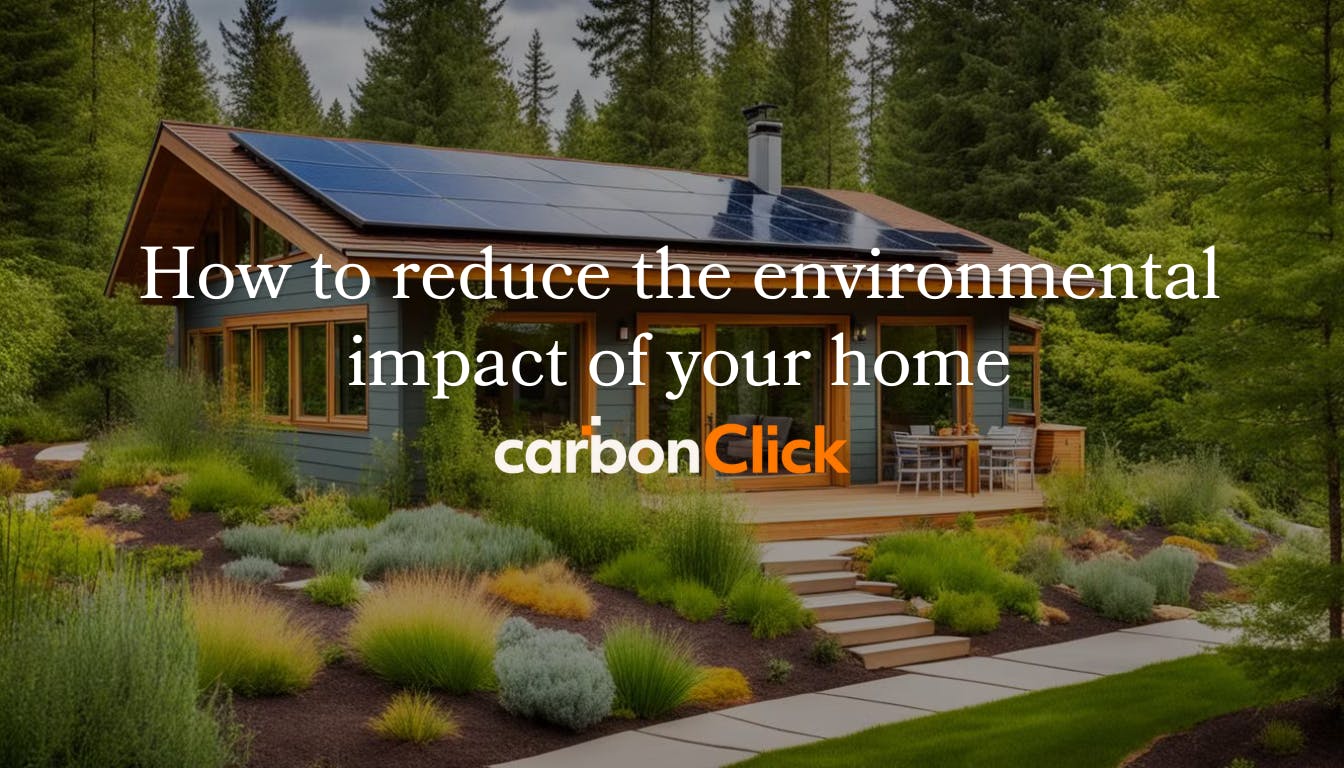
Key Takeaways
- On average, in the US, for example, a Michigan home's monthly energy usage is 3,948kW.
- Understanding our home's energy consumption plays a crucial role in reducing environmental impact.
- Small changes at home can significantly contribute to sustainability.
- Conducting an energy audit helps in identifying ways to reduce our ecological footprint.
- Reducing our carbon footprint at home aids the global effort against climate change effects, in small but significant ways.
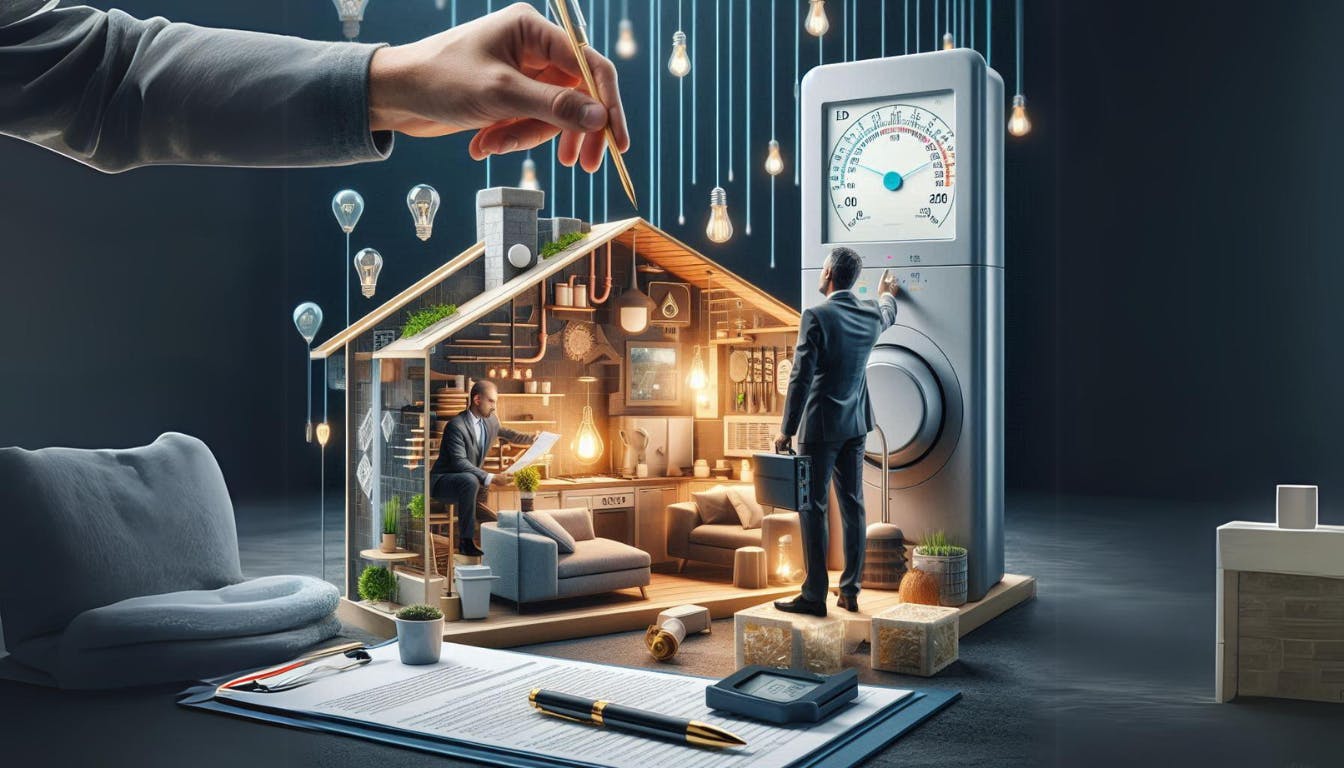
Understand your home's energy usage
Knowing how much energy our homes use is key to being more sustainable and reducing carbon emissions. By looking at how much energy we use, we can find ways to use less.
Conduct an Energy Audit
Starting an energy audit is the first step in your journey towards sustainability. It means checking how much energy our homes use to see where we can save. In 2016, homes in the US used 19% of the country's energy, with most of it coming from electricity. This helps us see where we can improve.
Energy audits show us what uses too much energy, like old appliances and not enough insulation. This helps us pick better options and save energy if we can. Although it may cost money upfront to better insulate and optimise energy usage, you'll save money in the long run and contribute to a cooler planet.
Calculate Your Carbon Footprint
Figuring out our carbon footprint shows how our energy use impacts the environment. It helps us see how our daily choices affect the planet.
For example, using energy-saving light bulbs reduces electricity use by 75%. This means we use less energy and emit fewer harmful gases. In 2014, using energy-efficient products saved people $31 billion on bills. In 2020, heating and cooling our homes uses over half of our energy, so improving these areas is crucial for sustainability.
By closely monitoring our energy use and calculating our carbon footprint, we can make conscious decisions. This helps protect the environment and works towards reducing harmful emissions. It's simply good for our planet and for the future. Every click brings us closer to a sustainable world.
Replace old insulation
Replacing old insulation in our homes boosts energy efficiency and supports sustainability. Many UK homes, built before 1919, have outdated insulation. Upgrading can cut energy use and carbon emissions.
Benefits of Improved Insulation
Improving insulation has many advantages. It keeps indoor temperatures steady, which means our heating and cooling systems need to work less. This lowers our energy bills and carbon footprint, for example helping meet the USA's 2050 emission goal. New insulation also improves air quality by reducing allergens and toxins in old materials. For more on health risks from old insulation, check this guide.
Types of Sustainable Insulation Materials
There are several sustainable insulation options:
- Fibreglass: New fibreglass types, like Johns Manville Formaldehyde-free, don't release harmful gases.
- Cellulose: Made from recycled paper, cellulose insulation helps reduce waste and supports sustainability. It is also treated with fire retardants for safety.
- Foam Board: Rigid panels made from polyisocyanurate offer excellent insulation and last a long time. They are also moisture-resistant and have a high R-value per inch.
- Rock Wool: This mineral insulation is fire-resistant and performs well over time.
- Spray Foam: Spray foam is versatile and effective, available in blends for various insulation needs and long-term environmental benefits.
These materials improve energy efficiency and conservation. Upgrading insulation often pays off by reducing energy bills and carbon emissions. For the best advice, consult a licensed professional for safe and effective installation.
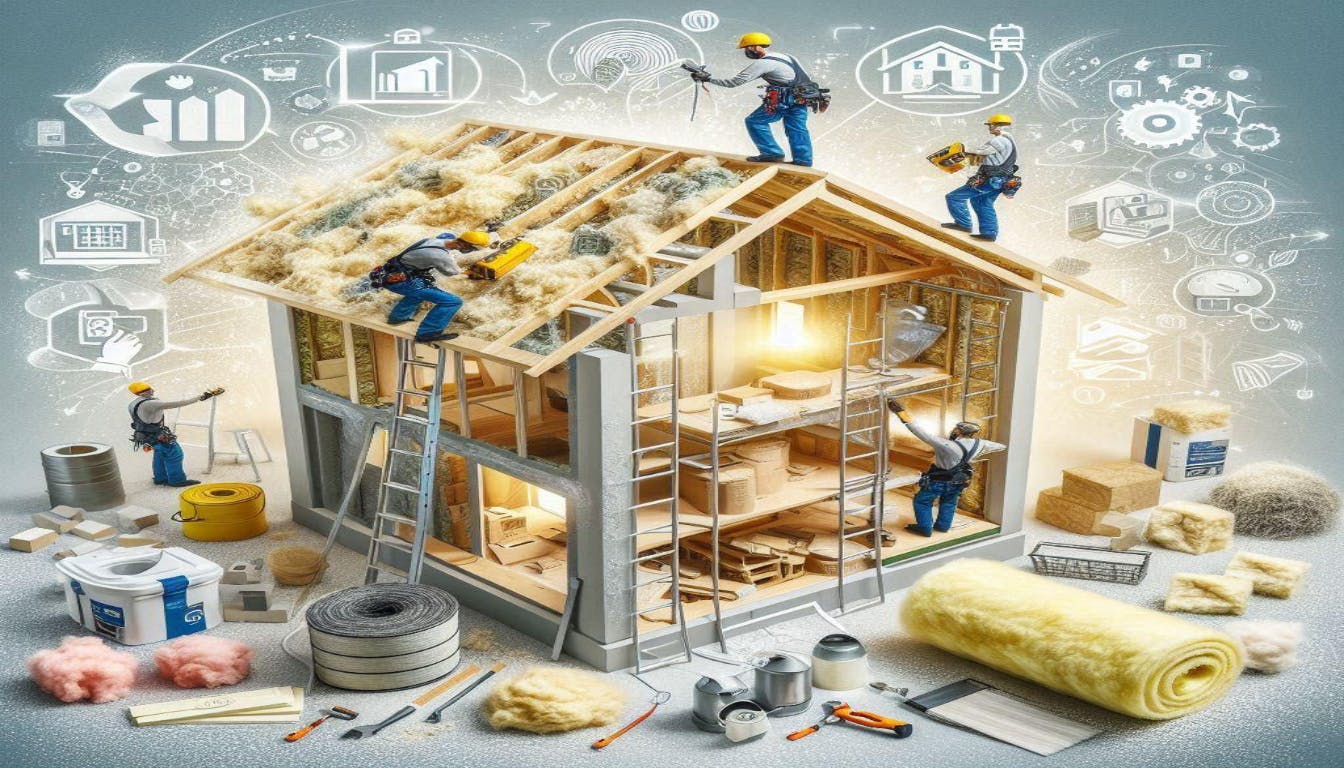
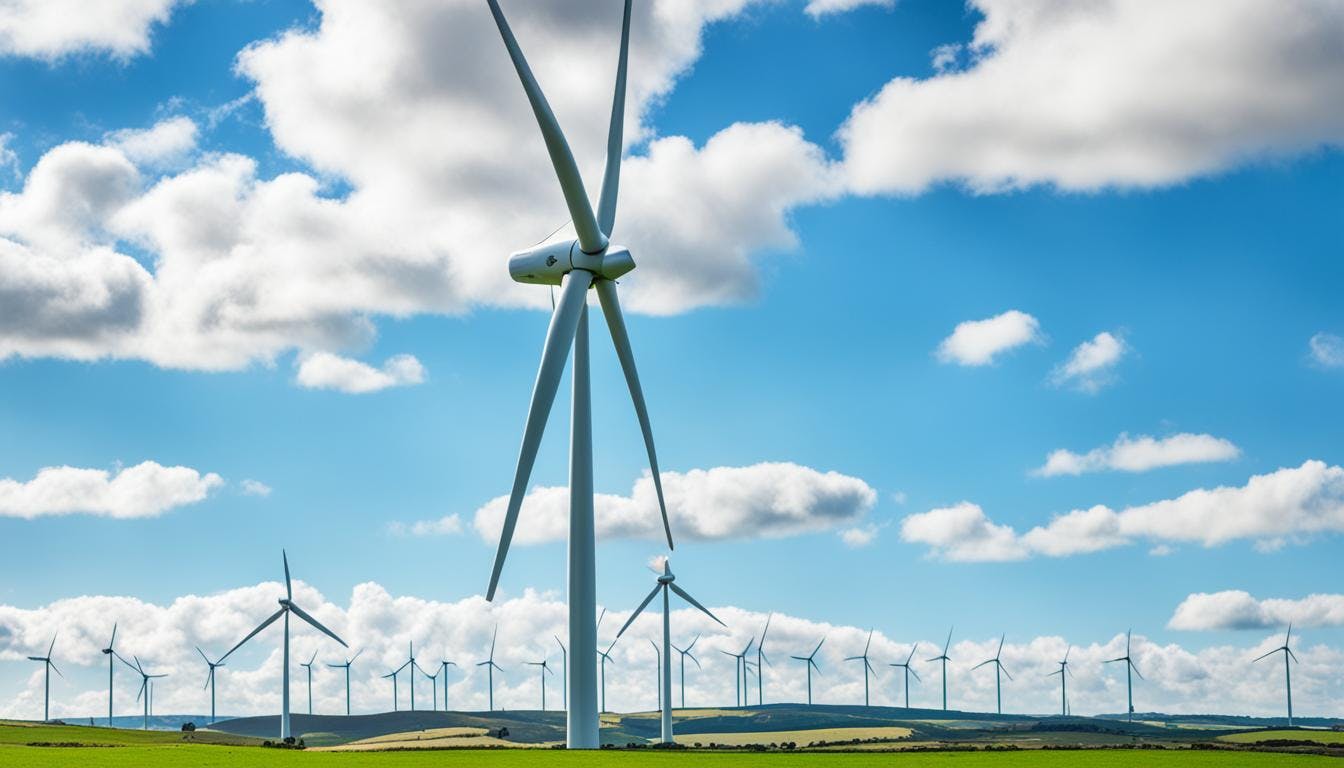
Consider renewable energy sources
We urgently need to tackle climate change and promote sustainable development. Using renewable energy at home is key. It brings significant benefits for the planet and our wallets.
Solar Energy Systems
Solar energy systems are gaining popularity due to their efficiency and ability to reduce greenhouse gas emissions. Solar panels can be installed on rooftops, making them suitable for both urban and rural homes.
They harness the power of the sun, a clean and virtually inexhaustible resource, helping to combat climate change by reducing reliance on fossil fuels.
Research is always looking to make solar energy better and less harmful. They're using AI to watch over wildlife and improve solar setups.
Geothermal Energy Options
Geothermal energy harnesses the Earth's internal heat, offering a more sustainable alternative. It supports sustainable development and helps preserve natural habitats. Geothermal energy provides a consistent power supply, unaffected by weather conditions, making it suitable for residential and commercial applications.
But, we must think about the land and materials needed for geothermal projects. We need to be careful before we start.
Benefits of Renewable Energy
Adopting renewable energy offers numerous benefits. It contributes to addressing climate change by reducing carbon emissions. Additionally, it helps conserve biodiversity by minimizing the negative impacts associated with traditional energy sources.
Clean energy technologies, such as wind turbines and solar panels, can be integrated into various landscapes with minimal ecological disturbance.
For instance, wind turbines can coexist with agricultural activities, and solar panels can be designed to accommodate wildlife.
Organisations like the U.S. Department of Energy (DOE) support research to enhance the environmental compatibility of renewable energy technologies. Transitioning to renewable energy not only benefits our planet but also stimulates economic growth and drives technological innovation. It paves the way for a more sustainable and resilient future.
Ensure your windows and doors are properly sealed
Properly sealed windows and doors are crucial in our efforts to save energy. They prevent drafts and air leaks that can significantly waste energy. The U.S. Department of Energy states that energy-efficient windows can reduce energy usage by up to 25%. This helps maintain a consistent indoor temperature, which benefits the environment and contributes to addressing climate change.
Noticeable drafts, condensation on windows, and higher energy bills can indicate that windows are not properly sealed. If windows and doors are old or damaged, they may be difficult to open and close. Signs of cracks, rot, or peeling paint suggest that they are not functioning optimally.
Opting for new windows and doors with high energy efficiency ratings is a wise decision. Look for products with the ENERGY STAR® label to minimise heat loss and energy consumption. These upgrades not only enhance the appearance of your home but also improve comfort, reduce noise, and increase its value. Simple maintenance tasks like weatherstripping and caulking can make a significant difference. Weatherstripping, which typically costs around $20, helps seal gaps around moving parts.
Professional installation is essential to ensure proper functioning and avoid future issues. Well-sealed windows help retain warmth during winter and keep it out during summer, reducing the load on heating and cooling systems. Utilising technology to seal our windows and doors allows us to conserve energy and combat climate change. Armed with this knowledge, we can make informed decisions to reduce utility bills and contribute to a more sustainable planet.
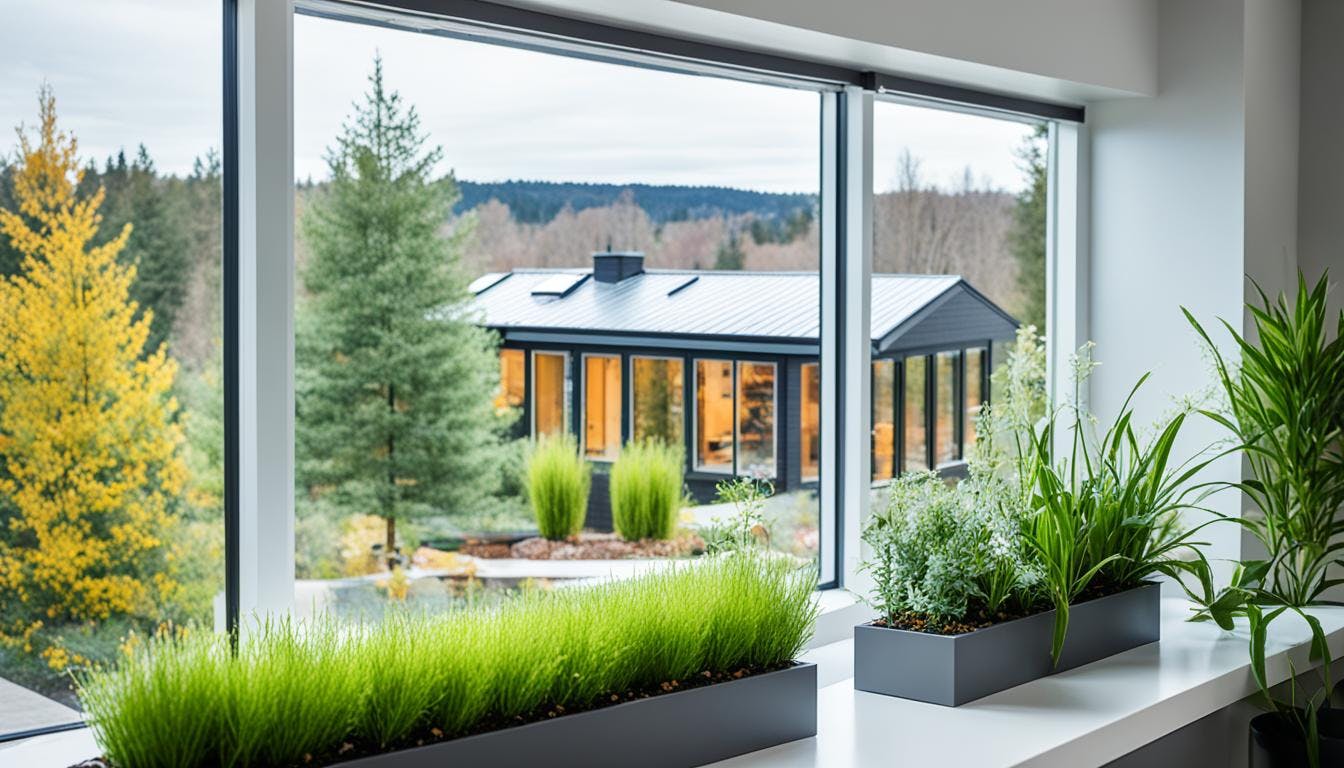
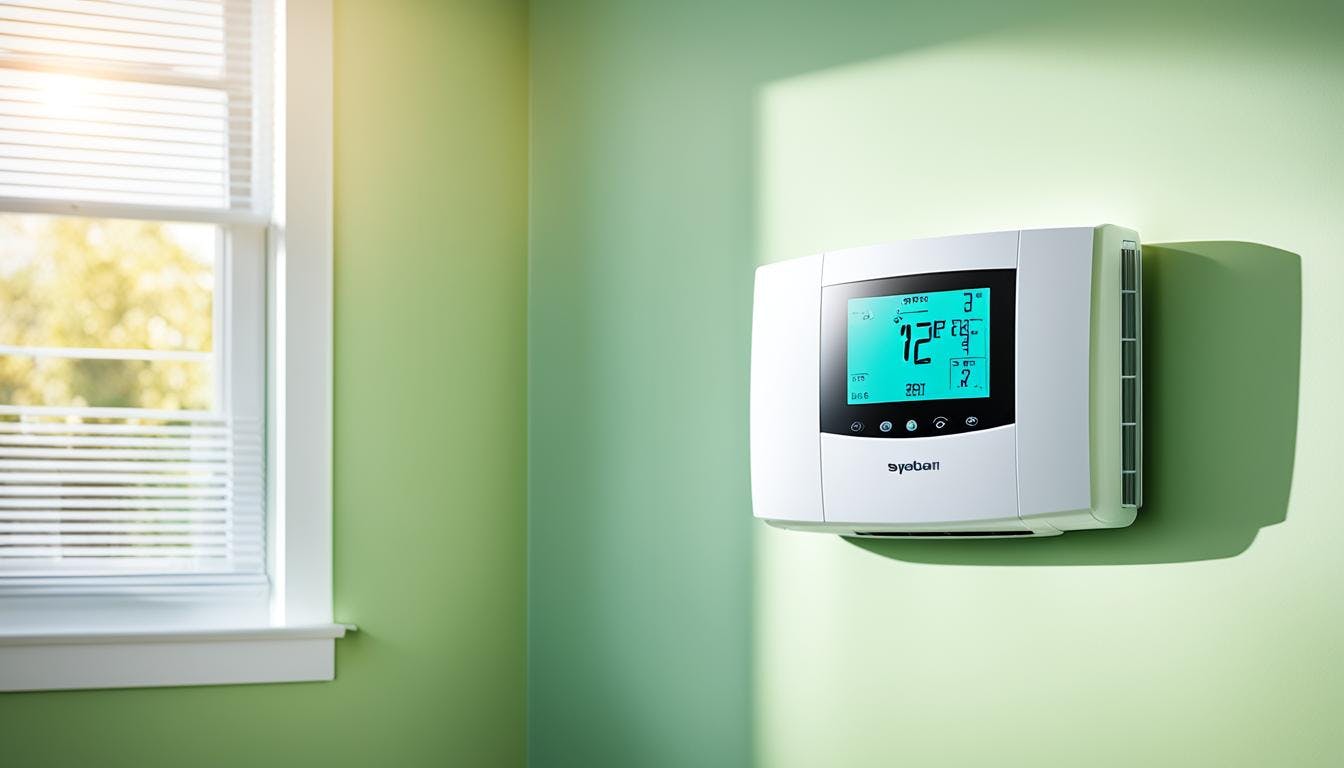
Upgrade your HVAC system
Switching to an energy-efficient HVAC system is crucial for making our homes more environmentally friendly and energy-efficient. It helps reduce energy consumption and supports the planet.
Energy-Efficient HVAC Systems
Choosing electric over gas HVAC systems can result in significant energy savings. This switch can reduce emissions by 38% to 53% over a 15-year period. It also decreases the global warming potential by up to 67%.
Air conditioners contribute significantly to greenhouse gas emissions, making electric systems a valuable solution. They minimise the environmental impact caused by these systems.
Ductless mini-split systems are highly efficient in saving energy. They reduce energy loss, which accounts for over 30% of air conditioning energy consumption. Older systems use harmful refrigerants that deplete the ozone layer. However, newer systems employ safer refrigerants like R-410A or R-32, which are more environmentally friendly.
Regular Maintenance and Upkeep
Maintaining HVAC systems in good condition is essential for their efficiency and longevity. Well-maintained systems operate more efficiently, require fewer repairs, and save energy over time. New technologies like zoning and smart thermostats enable better temperature control, further enhancing energy savings. Improperly sized HVAC systems waste a considerable amount of energy. Therefore, ensuring the correct size through professional load calculation is crucial.
Regular maintenance tasks, such as changing air filters, can save up to 15% of energy. This not only saves money but also benefits the planet. Taking proper care of our HVAC units supports our sustainable lifestyle and helps maintain a healthy environment.
Swap out home appliances
Replacing old home appliances with new, energy-efficient ones is key to reducing harm to the environment and cutting down on greenhouse gas emissions. A fridge uses about 15% of a home's energy. Switching to newer models can save up to $1,000 a year on bills and help the planet.
Appliances with the ENERGY STAR label use less energy and produce fewer greenhouse gasses. In Canada, these appliances use up to 14% of a home's energy. By choosing efficient models, we can all help reduce energy use and protect the environment.
Modern dishwashers, front-loading washers, and electric heat pump water heaters are great for the planet. For example, electric heat pumps can cut greenhouse gas emissions by 35% in Mississauga. This supports the city's goal to reduce emissions by 40% by 2030.
Looking after your appliances helps them work better and saves energy. Simple actions like drying clothes on a line instead of in a dryer can save energy. Companies are also working on making appliances even more efficient.
Working towards the United Nations Sustainable Development Goals means making sure everyone has access to efficient appliances. With billions of appliances in use, each one uses energy and emits pollutants. By choosing sustainable appliances and upgrading our old ones, we can all make a big difference. Small changes, like using energy-efficient fridges or smart thermostats, can have a big impact on the environment and help us build a sustainable future.

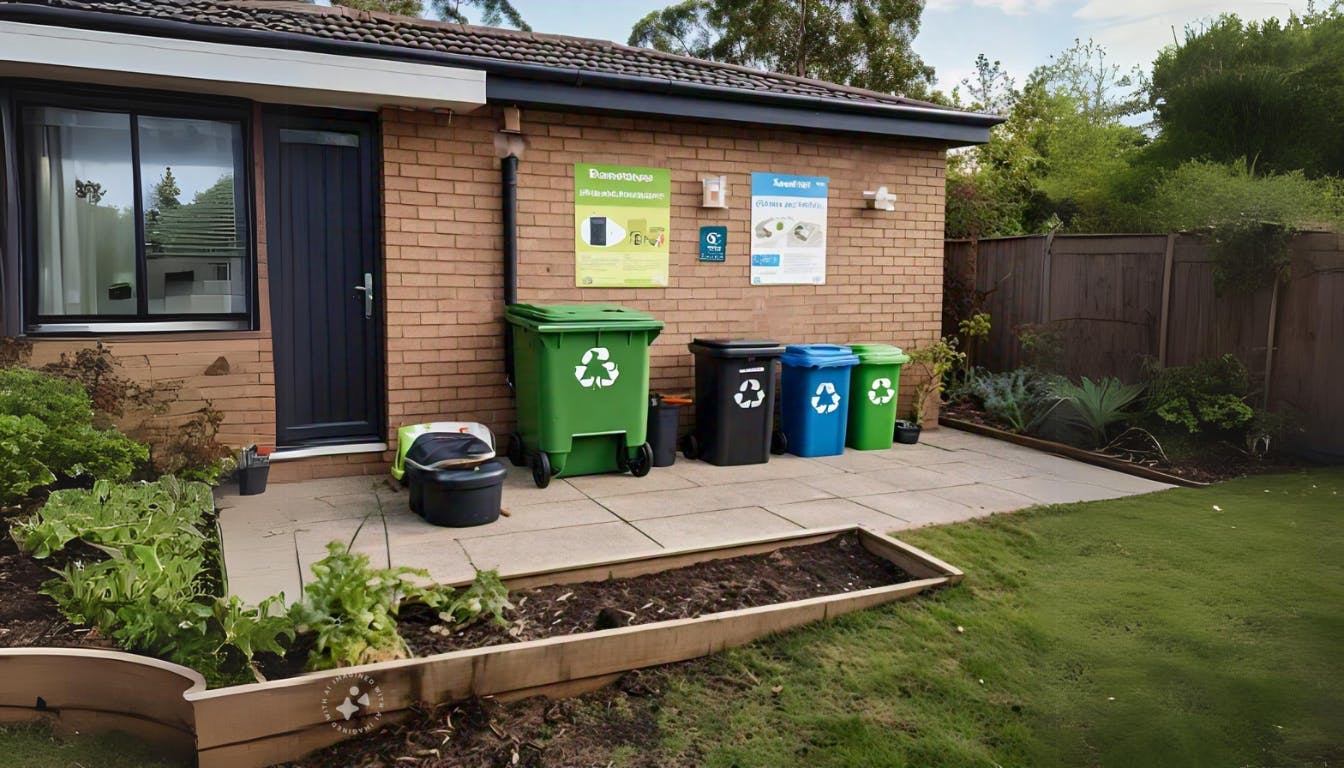
Implement waste management and recycling strategies
Managing waste at home makes our environment cleaner and helps reduce our impact on nature. Using good waste management strategies can lessen our harm to natural resources. It also encourages us to use more renewable energy.
Reduce, Reuse, Recycle
Reducing, reusing, and recycling are key to managing waste well. These actions cut down our waste and save resources. Recycling, for example, saves natural resources and uses less energy and produces less pollution than making new products.
In 2009, recycling and composting kept 82 million tons of waste out of landfills. This saved about 178 million metric tons of carbon dioxide. That's like taking 33 million cars off the road. These strategies help the environment and can create jobs and grow the economy.
Composting Organic Waste
Composting is a big part of managing waste. It turns organic waste into something good for the soil, reducing landfill waste. In Africa, composting programs are helping manage solid waste and protect the environment.
In 2009, composting stopped 20.8 million tons of waste from being thrown away in the United States alone. It shows how effective composting is in reducing waste. This method also helps make sustainable products from waste.
Proper Disposal of E-Waste
Getting rid of electronic waste, or e-waste, right is also important. With more technology, we have more e-waste. If not disposed of correctly, e-waste can harm the environment because it has dangerous materials like lead and mercury.
Good waste management means separating e-waste and recycling it safely. This reduces the strain on natural resources. It's part of a strategy to prevent waste by using technology and methods during product use.
Using these waste and recycling strategies helps us reduce harm to the environment. It encourages us to adopt renewable energy and live sustainably. By managing waste well, we move towards a better future.
Adopt environmentally conscious practices for daily living
Making our daily lives more sustainable can greatly lessen our impact on the environment. We can start by making our homes more sustainable. This includes saving energy and using water wisely.
Using low-energy lighting is a big step forward. These lights save energy and lower our bills. This helps protect our environment.
Use of Low-Energy Lighting
Energy-saving light bulbs can cut carbon emissions by up to 40kg a year, says the Energy Saving Trust. Switching to LED or CFL bulbs reduces energy use and our environmental impact.
Smart Home Technologies
Smart home tech is key to living with a low environmental impact. UK homes with Google's Nest thermostat saved an average of 16.3% on their heating costs, not 16.5% on overall energy use as previously stated. These systems help us save money and support ecological stewardship.
Water-Saving Fixtures
Saving water is crucial with more people and droughts. Using low-flow showerheads and dual-flush toilets cuts down water use. Since animal farming uses a lot of water, we must be careful with our water.
These simple steps help us live sustainably. By saving energy and water, we're helping to protect the planet for the future.

Conclusion
In this article, we explored ways to lessen our homes' environmental impact. We looked at steps like understanding our energy use, using renewable energy, and better insulation. Making smart choices can make a big difference for sustainable living.
An energy audit can show where we can improve. This might mean using efficient insulation or looking into solar or geothermal energy. By making our HVAC systems more efficient and keeping them in good shape, we can lessen our impact on climate change. Also, swapping old appliances and sealing gaps in our homes helps save energy and reduces our ecological footprint.
Living with a low environmental impact is key to sustainable living. We can do this by managing waste better, reusing, recycling, and getting rid of e-waste safely. Using less water, low-energy lights, and smart home tech also helps us use resources wisely. These actions help us tackle environmental issues effectively.
Small changes in our daily life can lead to a better future. By reducing our environmental impact, we help combat climate change and ensure a better world for our kids. This movement against climate change is not just for governments and big companies. It's up to all of us to start at home.
The claims and recommendations made in the article are generally accurate and aligned with established environmental science principles and best practices for sustainable living.
FAQ's
How can we reduce the environmental impact of our home?
We can start by doing energy audits and replacing old insulation. We should also look into renewable energy and use energy-efficient appliances. These steps help lower our impact on the planet and help climate change.
Why is it important to conduct an energy audit?
Energy audits are key because they show us how much energy our homes use. They help us find ways to use less energy. This means we can cut down our carbon footprint and help the planet.
What are the benefits of replacing old insulation?
Replacing old insulation keeps the temperature steady inside our homes. This means our heating and cooling systems don't work as hard. It uses less energy and is better for the environment.
What types of renewable energy sources should we consider?
We should think about using solar and geothermal energy. These sources are cleaner and cut down on harmful emissions. They also help protect nature and help climate change.
How can properly sealed windows and doors help?
Sealing windows and doors stops air from leaking out. This saves energy and keeps the temperature steady inside. It's good for the planet and helps reduce pollution.
What are the advantages of upgrading to an energy-efficient HVAC system?
Energy-efficient HVAC systems use less energy and keep temperatures even. They're better for the environment. Keeping them in good shape makes them last longer and helps us live more sustainably.
Why should we swap out old home appliances for energy-efficient models?
Old appliances use more energy and cost more to run. New ones use less energy and are better for the planet. They also save us money and reduce harm to the environment.
What waste management and recycling strategies should we implement?
We should reduce, reuse, and recycle to lessen our impact on the environment. Composting and recycling e-waste also helps. These actions manage waste better and support clean energy.
How can we adopt environmentally conscious practices in our daily living?
We can use less energy lights, smart tech, and water-saving devices. These changes help us use less energy and protect nature. They make our homes better and support sustainability.
17 South Street
Auckland 1010
New Zealand
info@carbonclick.com- -
- X
Sign up. Be inspired. Get clicking.
Subscribe now to stay up to date with CarbonClick, carbon offsetting and climate action.
By signing up you agree to our Privacy Policy.


